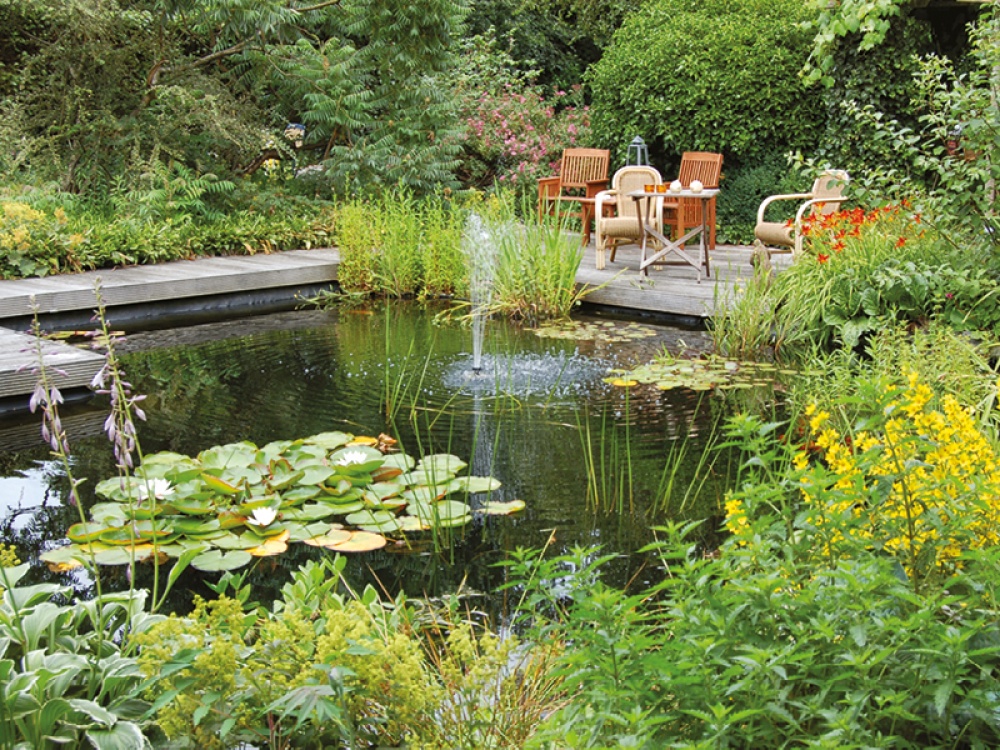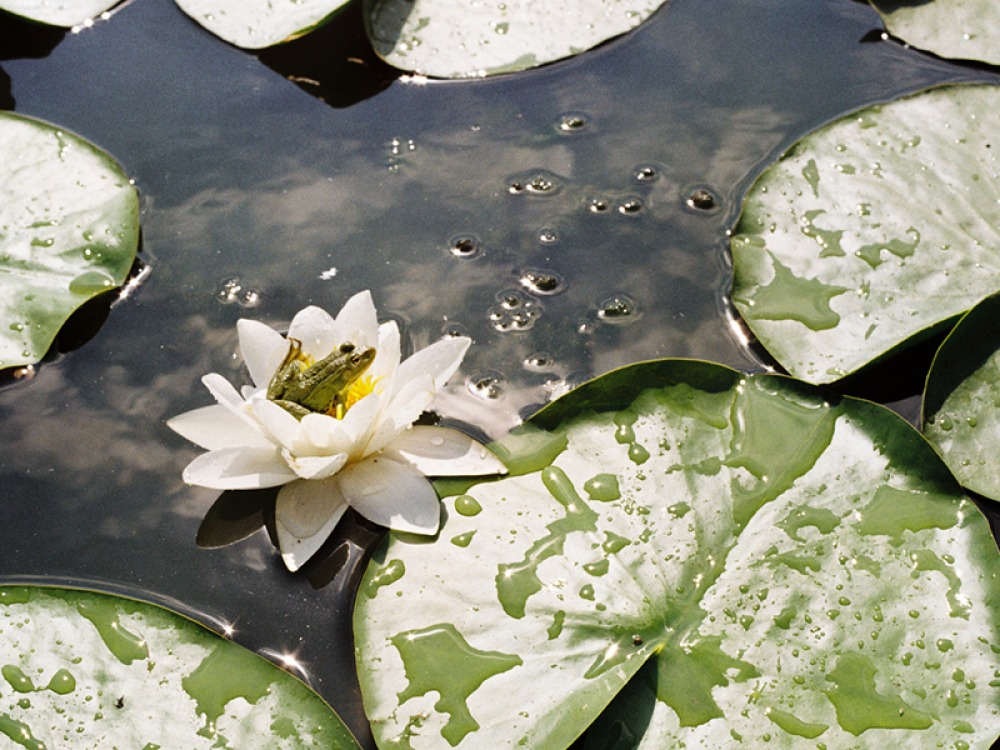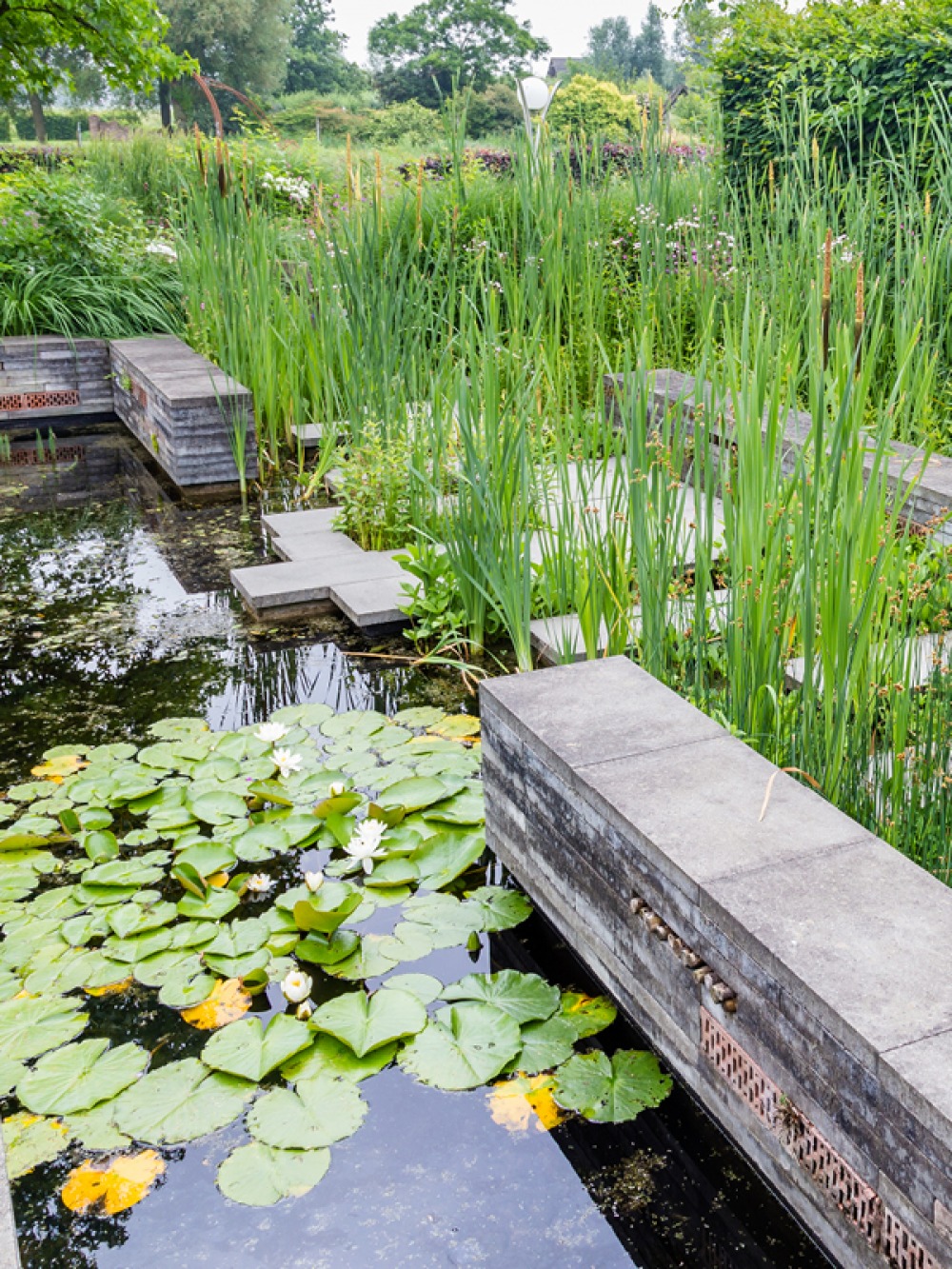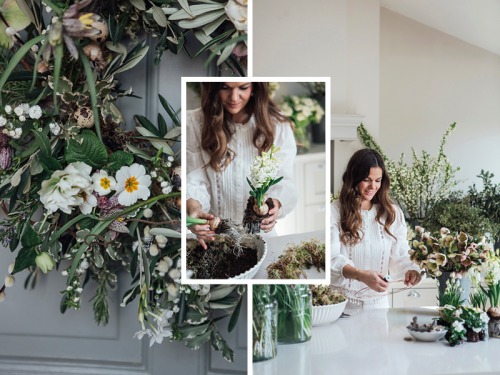Top Tips for Creating a Pond to Encourage Wildlife into Your Garden

Gardeners across the country are being urged to put in a pond and reap the benefits for wildlife, and themselves
Alongside improving your health and wellbeing, adding a pond can help light up a shady garden. Water is reflective so it will bounce the sunlight around the garden helping even the shadiest areas to thrive. It can also add value to your property. A well landscaped and carefully-maintained garden can add 20 percent to the value of your property, so for a relatively small outlay you can reap so many rewards.
Unfortunately, the UK has been losing a lot of its ponds, rivers and streams at a rapid rate, and only a small amount of our natural ponds and wetlands remain. Many of those left are in poor condition, and over 13 percent of freshwater and wetland species are now threatened with extinction within Britain. A sunken pond will encourage hedgehogs, frogs, newts and other amphibians to your garden, while ponds large or small are brilliant for bats, damselflies, dragonflies and other insects.
It’s so easy to help wildlife with a pocket pond. All you need to do is fill an old sink or washing-up bowl with rainwater, plant it up and make sure that wildlife can get in and out – it’s that easy!
Other household and garden items you can up-cycle into a small pond include old wheelbarrows, half a barrel, a cut down plastic dustbin or a rubber trug. Once you’ve decided on your container, all you need is some pond-liner (if your container isn’t watertight), old bricks, rocks and pebbles, some pond plants and a spade. Add the pond-liner if using, then layer the rocks and pebbles before filling with rainwater (tap water contains chemicals), then start planting.
Read More: Everything You Need to Know about Building Raised Beds in your Garden

For a larger sunken pond, look for a spot that enjoys the sun in the morning but is shady in the afternoon. Draw your outline and dig it out, leaving some shallower areas. Put a layer of sand in the bottom, and then make a trench all the way around your pond – lay butyl pond-liner in it and weigh down with large rocks, then put another layer of sand. Finally, fill the pond with rainwater, begin adding plants and watch the wildlife jump in.
Plants are vital to your pond’s health as they oxygenate the water and provide food and shelter – try to use native UK species to reduce your carbon footprint. For the edge of your pond (up to a depth of five centimetres) you can plant marsh marigolds (Caltha palustris), bright yellow lesser spearwort (Ranunculus flammula), water forget-me-not (Myosotis scorpioides) or, for slightly larger ponds, try water plantain (Alisma plantago-aquatica).
Floating plants and water lilies provide perfect perches for frogs and bees. Perhaps try frogbit (Hydrocharis morsus-ranae), water soldier (Stratiotes aloides) and white water lilies (Nymphaea alba) – although it should be noted that these last two are only suitable for larger ponds. If you’ve opted for the smaller container-style pond, some suitable plant options include miniature water lilies (Nymphaea ‘Pygmaea Helvola’), starwort (Callitriche stagnalis) and flowering rush (Butomus umbellatus).
Read More: The Best Gardens to Visit in the North East this Spring

Finally, those all-important oxygenators – these plants are not essential for a small pond but will keep bigger ponds healthy while submerged under the water. Try water-crowfoot (Ranunculus aquatilis), water violet (Hottonia palustris), pillwort (Pilularia globulifera) and willow moss (Fontinalis antipyretica), which is best planted attached to a stone.
Now that you’ve got your plants in you’re ready to go, but the experts at the RHS and Wildlife Trusts do have some tips for keeping your pond at its best throughout the year.
SPRING
Put in barley straw pads to help reduce any algae issues. Try not to disturb your pond too much during this time as there will be a lot of activity going on under the surface. Introduce any new plants mid-spring, when you can also divide plants and compost any excess.
SUMMER
Some evaporation is normal in the summer, but if your pond level drops too low, do top it up with rainwater. Keep the grass around the pond long to provide shelter for baby frogs, but cut back any vigorous plants and remove duckweed. Blanketweed can also be pulled out in small amounts at a time, but be sure to check for any trapped newts, water boatmen or other wildlife before doing so.
Read More: Super Tips for Growing Sunflowers
AUTUMN
If you need to carry out any maintenance work, do it now while the pond is less active. Plants will also die back at this time. Remove excess fallen leaves and cut back any overhanging branches to allow more light to reach the pond.
WINTER
A healthy pond shouldn’t be too affected by freezing over, but a mini pond can be bubble-wrapped for insulation or moved closer to the house. Avoid smashing the ice as the shards can cause damage. If wildlife depends on your pond for drinking water, leave a ball near the edge to keep a section free or melt a hole by holding a pan of hot water over the ice. Brush any snow off the surface to maximise light.







